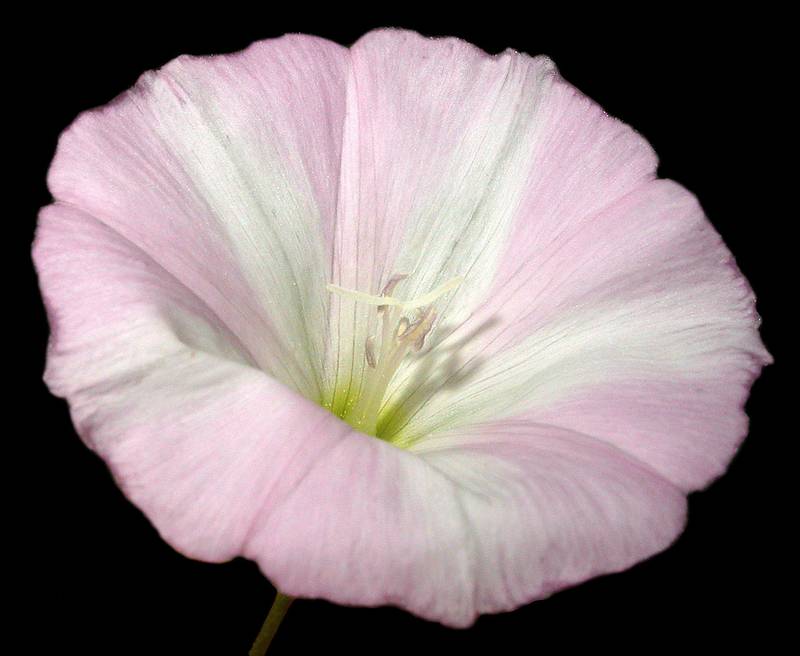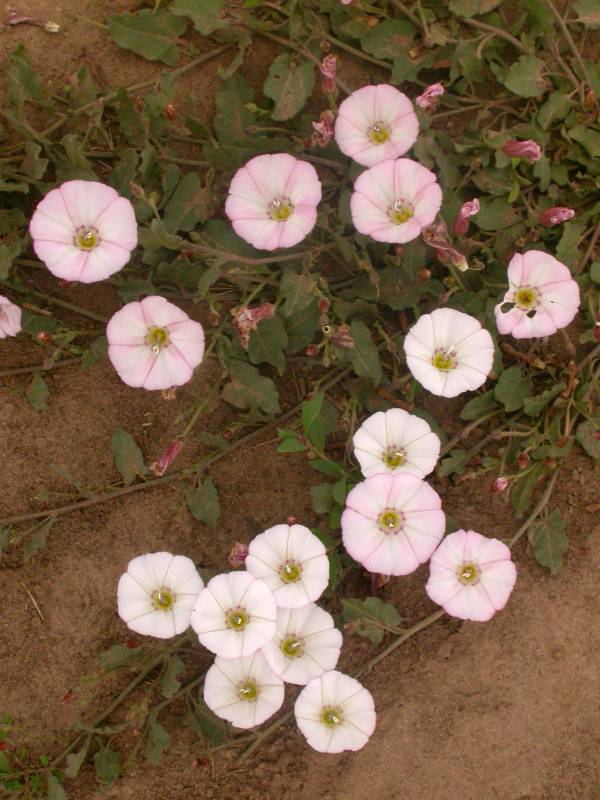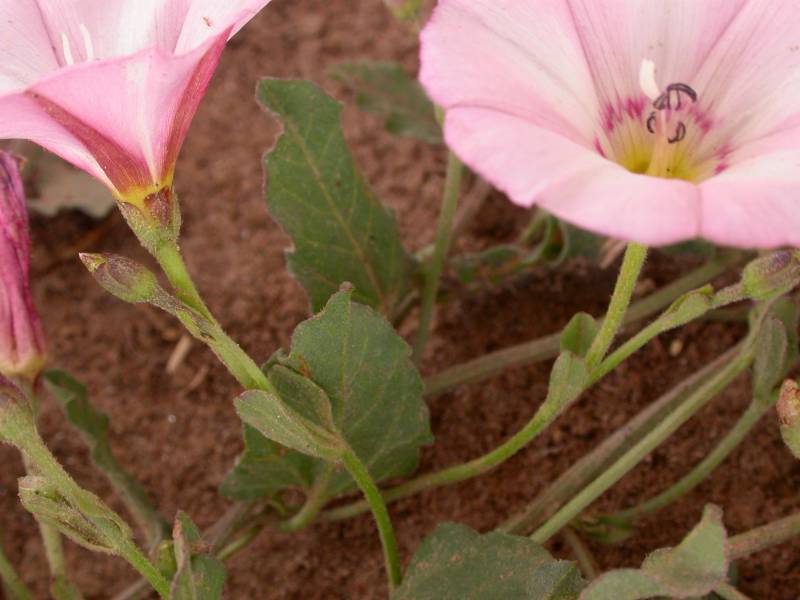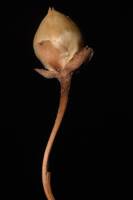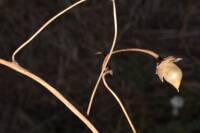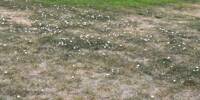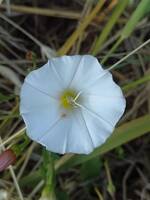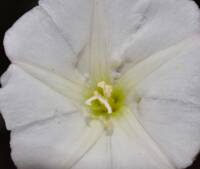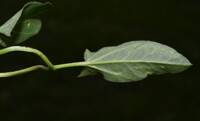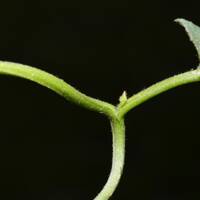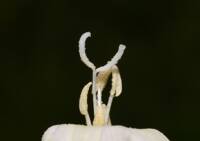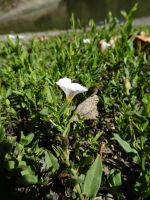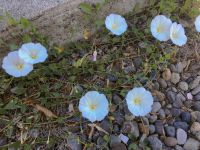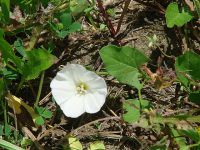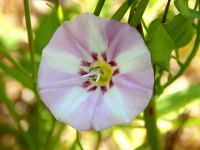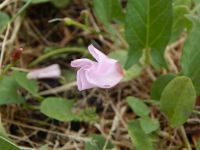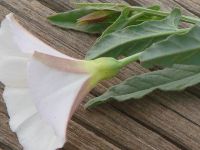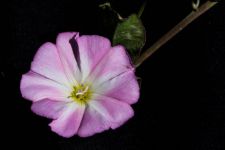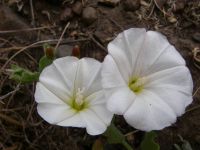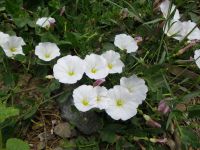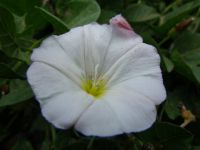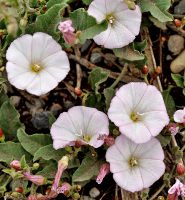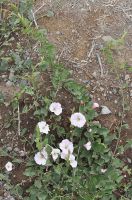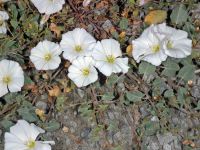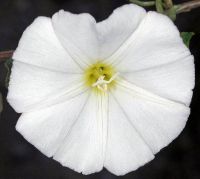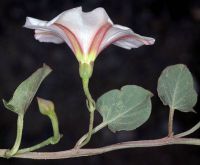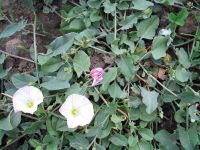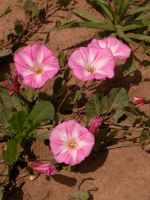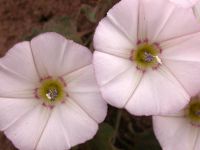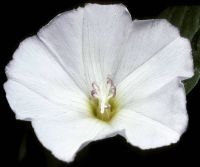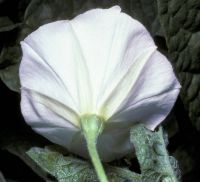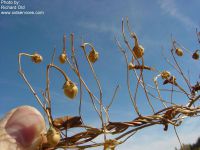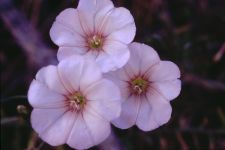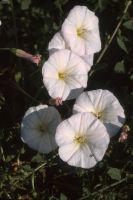Distribution: Occurring on both sides of the Cascades crest in Washington; Alaska to California, east across North America to the Atlantic Coast.
Habitat: Fields, roadsides, open areas, wastelots, and other disturbed sites.
Flowers: April-October
Origin: Introduced from Europe
Growth Duration: Perennial
Conservation Status: Not of concern
Pollination: Bumblebees, bees
Perennial herbs from deep, widespread rhizomes, the stems trailing and somewhat twining, 2-20 dm. long, glabrous to densely pubescent.
Leaves alternate, petiolate; leaf blades usually sagittate or hastate, obtuse or pointed, 2-6 cm. long.
Flowers in the axils on peduncles exceeding the leaves, single with a pair of bracts about mid-length, or two with the shorter peduncle bractless; calyx divided to the base, the 5 lobes oblong, 4-5 mm. long, with papery margins; corolla funnel-shaped, white or purplish-pink, at least on the outside, 3-5 cm. long; stamens 5, attached near the base of the corolla alternate with the lobes; style slender, exceeding the stamens, the stigmas slightly flattened; ovary 2-celled, superior.
Capsule oblong-obconic, 5-7 mm. long
Publication: Sp. Pl. 153. 1753.
PNW Herbaria: Specimen records of Convolvulus arvensis in the Consortium of Pacific Northwest Herbaria database
WA Flora Checklist: Convolvulus arvensis checklist entry
OregonFlora: Convolvulus arvensis information
E-Flora BC: Convolvulus arvensis atlas page
CalPhotos: Convolvulus arvensis photos

